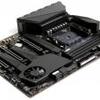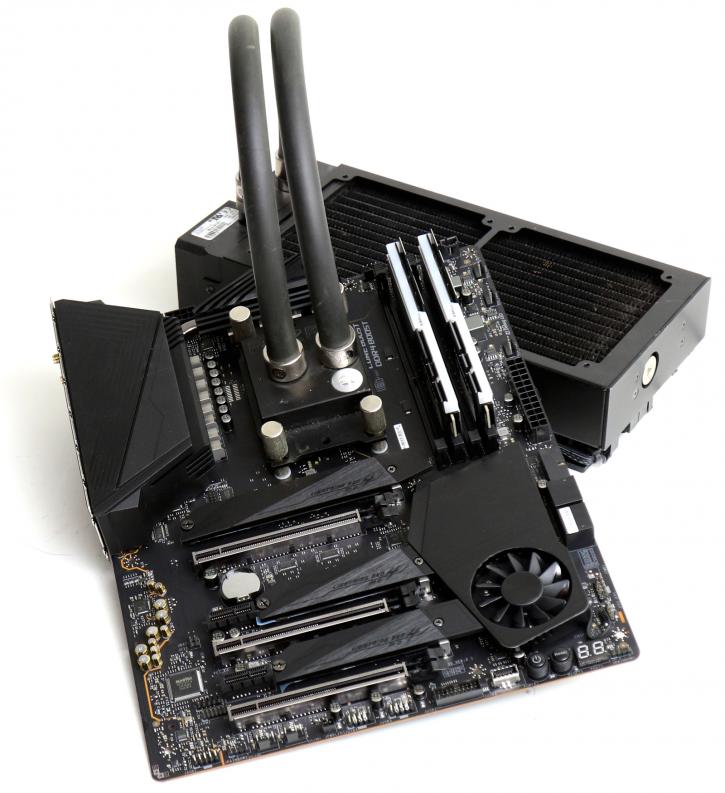Final Words & Conclusion
Final Words
What an incredible look motherboard, eh? A sleek, high-end feel and the MEG Unify falls into that category. It's a beast and then some. MSI used nothing other than quality components here and kept adding a 2.5 Gigabit jack, and really good WIFI6 (AX) has not been forgotten. BTW our AC wifi test was astoundedly good with 700~800 Mbit/s throughput on just a single link. Very impressive. It is the very same with the threefold of M2 slots, properly cooled btw. The X570 motherboards mostly all have an active fan for the chipset. This MSI one I rate as very silent as it simply did not spin up during usage, not once. We had heard it when the PC booted, but then it enters a passive state. Most manufacturers will offer RPM settings available from the BIOS to regulate this at your preference. We'll be closely monitoring all the boards we'll review but again, for this board, we had no issues with an audible noise.
DDR4 Memory
Memory compatibility should not and likely will not be an issue as long as you stick to recently released DIMMs. I'll keep repeating this, but there are some really good Ryzen optimized kits out there. With Ryzen Generation 3, you can go higher in DDR4 clock frequency if you want to. The MSI MEG Godlike can manage 4800 MHz - We advise you to use up to 3600 MHz; CL16 is fine; after that frequency value, a 2:1 divider kicks in, and that can affect the Infinity Fabric bandwidth, inter-core CCX bandwidth. We see no reason for faster DDR4 memory anyway; it's expensive and does not bring in added perf, much like what you see on Intel platforms as well. So my advice is a minimum 3200 MHz frequency for the memory; CL14 would be awesome, of course, especially since DDR4 prices have been on the decline for a year now. Also, on Ryzen 5000, the Infinity fabric (interlink) runs faster. There 4000 MHz could become a new norm.
Energy efficiency
With these processors now fabbed at 7nm, you may see some interesting energy efficiency; the roughly 75 Watts for the 3700X is, of course, fine all by itself. Mind you, these are numbers at a nominal load. Not your continuous power draw. Overall the 3700X was idling a bit higher than expected, but that is likely due to the massively outfitted motherboard (extra ICs do use extra power). The load values are excellent as our 3700X reached 184 Watts with stress on all 16 threads.
The conclusion
I adore this motherboard just for the looks. However, prices do pose an issue. Current;y this board is listed at 280 EUR with roughly similar prices in USD. That I find too much. I mean, this board is pretty close to chipset features aside from 2.5GigE and AX wifi. That makes the near 300 bucks hard to justify. For most end-users, B550 is the more economical route to follow; you'll still get PCIe gen 4.0 on the graphics slot as well as on one M2 unit. That's more than enough and easily a third of the price cheaper. AMD has moved B550 from mainstream to high-end and X570 to the enthusiast-class motherboards and priced it accordingly. That said, the four SATA3 ports might be a hindrance to some, as six or eight would be preferred. Accumulating it up, it can manage four SATA3 storage units and three M2 units. Can we say it simple?; the black style is great! It is just a superb looking product. Of course, the big plus is the full PCIe Gen 4.0 infrastructure the X570 platform offers with Ryzen 3000 and 5000. It does open up more storage options. The reality is also that a fast PCIe Gen 3.0 storage unit is more than fine as well. The phase design and power delivery as well are fine. Our thermal heat imagery did not even light up slightly. Even under full stress on 24 threads, the motherboard did not heat up in that VRM area. Tweaking wise, the motherboards will not be any limitation; the processors, however, are. Due to its high price level, I initially did not want to grant it an award; the reality is also that this really is a too-sweet looking product, so it really deserves one. It does come recommended and approved for those willing to chip in near 300 bucks as it is a solid and extremely stable platform build upon quality components solely. If this motherboard would have been sub-200 USD, it could and probably would have been a top pick.
Note: this review was written prior to the Ryzen 5000 release and got snowed under with all GPU releases. This review is based on a Series 3000 processor.
- Sign up to receive a notification when we publish a new article
- Or go back to Guru3D's front page.



